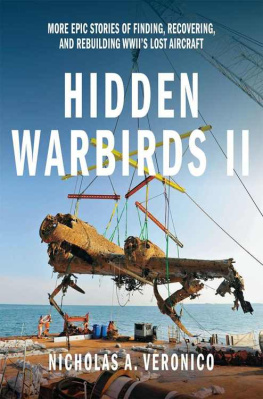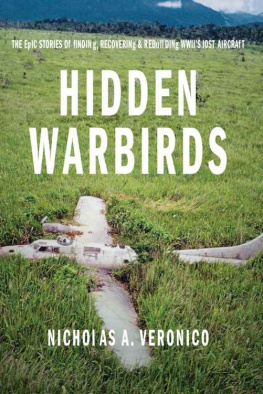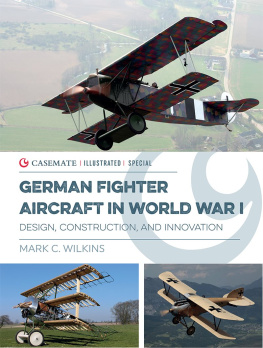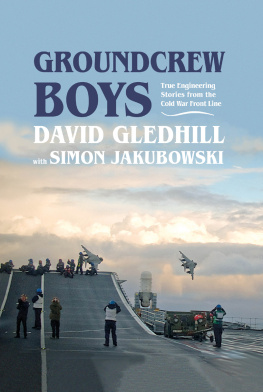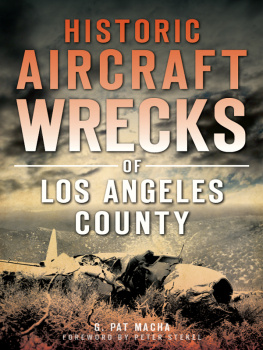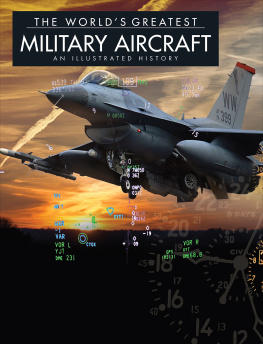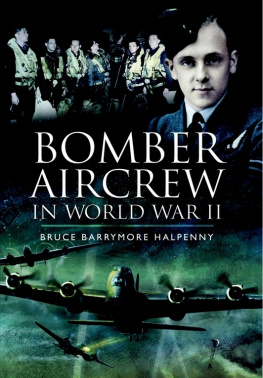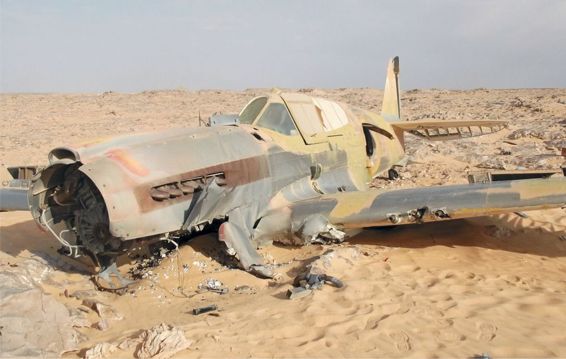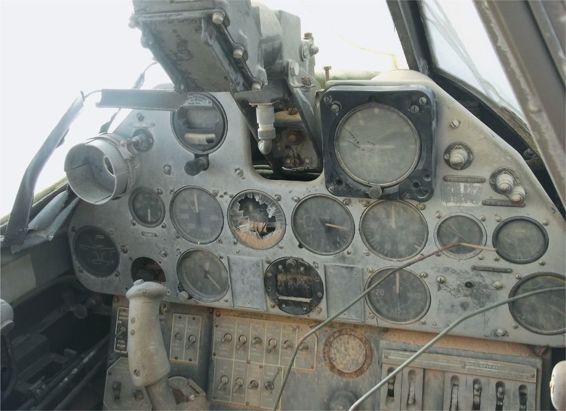Documenting the stories of these aircraft and those involved requires the generosity of many people. And to them, I owe a debt of gratitude and extend my thanks to: Ian Abbott; Carlos Abella; Mark R. Allen; Bill Allmon; Peter Arnold; Jim Azelton; Rebecca Azelton; Brian Baker; Gerald Balzer; Caroline and Ray Bingham; Bruce Brockhagen; Don Brooks; Roger Cain; Patrick Carry and Christopher Johnson; James Carter and Karl von MollerBroken Wings; Tom Camp; Wayne Cook; Lex Crawley; Charles Darby; Ed Davies; John Davis; Robert F. Dorr; Bill Dunbar; Doug Kirby; Shelley Ragsdale; Paul Schumacher; Drannon VinesNational Naval Aviation Museum; Jim Dunn; Ann Y. Evans; Chad Ezell; Nelson Ezell; Randy Ferris; Guttorm Fjeldstad; Curtis Fowles; Craig FullerAviation Archaeological Investigation and Research; Chuck Geise; Erik Gilgand the staff at Zenith Books; Wayne Gomes; Cory Graff; Kevin Grantham; Woody Grantham; Todd Hackbarth; Dan Hagedorn; Alice Hendricks; Hlio Higuchi; Ted HolgersonCalifornia Airframe Parts; Frederick Johnsen; Vallarie Kilkenney-Jukes and Norm Jukes; Larry Kotz; Robert Kropp; Dr. Gary Kuhn; Martin Kyburz; Christer Landberg; Tillie and William T. Larkins; Jim Larsen; Dave Leininger; Gerry Liang; Roger Mecca; Dale Messimer; Robert Mester; Patrick Mihalek; Chris Miller; John Muszala and John Muszala II; Anne Murata and James KoivunenPacific Aviation Museum Pearl Harbor; Robert Nishimura; Michael OLeary; Mike OliverTillamook Air Museum; Allan Olson and Taras LyssenkoA. and T. Recovery; Milo Peltzer; Jakub Perka; Dick Phillips; Tyler Pinkerton; Chris Prevost and Sheryl Carlucci; Paul Quinn; Taigh RameyVintage Aircraft; Scott Rose, editor of the Warbird Information Exchange (WIX) as well as many WIXers; Lee Scales; Pat Scannon; Doug Scroggins; Joe Shoen; Jim Slattery; Scott Slocum; Robert Smith; Ajay Srivastava and Michelle MorgansRAF Museum; Bill Stanczak, Ron Strong; Scott Thompson; Dave Trojan; Rick Turner; Anders Utgaard; Mike VadeboncoeurMidwest Aero; Richard VanderMeulen; Paul Varga; Armand and Karen Veronico; Betty Veronico; Tony Veronico; Mike Walton; Mark Watt; Dan F. Webb; Tom Wilson; and Christen Wright.
With great appreciation.
Flight Sergeant Dennis Copping belly-landed RAF Kittyhawk ET574 on June 28, 1942, two hundred miles from the nearest settlement in Egypt. Copping was listed as missing in action and his aircraft was not found until Jakub Perka stumbled across it seventy years later. The aircraft is a time capsule and is nearly complete. This aircraft has been recovered by the RAF Museum and is now in storage. Jakub Perka
Today, nearly seventy years after the end of World War II, there is a strong movement to find, restore, and fly aircraft from that conflict. It is one thing to see a Messerschmitt Bf 109, a North American Aviation P-51 Mustang, or a Supermarine Spitfire sitting in a museum, but it is another sensory experience to hear the roar of a Rolls-Royce Merlin or Daimler-Benz engine as it pulls a fighter through the air at speeds approaching 400 mph. The sound is heard and the engines vibrations are felt, depending upon where one stands, and the auditory sensations of the aircraft and its engine bring history to life.
It is the sights and sounds of warbirds of all types that have made the flying airshow so popular. All of todays warbird airshows owe their existence to the National Air Races, held at Cleveland, Ohio, before and after World War II. In fact, the warbird movement as a whole owes a debt to the National Air Races.
The war in Europe officially ended on May 7, 1945, punctuated by Adolf Hitlers suicide on April 30, 1945. The Japanese surrendered unconditionally to Allied Forces on September 2, 1945, after two atomic bombs were dropped on its cities (Hiroshima on August 6 and Nagasaki on August 9, 1945), ending the conflict. In January 1946, as servicemen and women were still in the process of returning from duty overseas, it was announced that the National Air Races would return to Cleveland, Ohio, in September of that year.
Servicemen and women had flown aircraft much faster than those that had competed in the pre-war National Air Races, and the most competitive of the ex-military pilots made their way to aircraft surplus yards around the county to secure an aircraft capable of winning the races. The women, most former Women Airforce Service Pilots (WASPs), would compete in the Halle Trophy races, sponsored by Halle department stores. The Halle Trophy Race for women was confined to AT-6/SNJ-type aircraft and consisted of five laps of a fifteen-mile course, or seventy-five miles. Men and women could also compete in the Bendix R Division, a cross-country speed dash or any of the various closed-course trophy races. For the cross-country and closed-course races, competitors brought a variety of war-surplus P-38 Lightnings, P-51As, Bs, Cs, and Ds, along with a number of Bell P-39 Airacobras and P-63 Kingcobras.
Because of their value, everyone is keeping an eye out for hidden warbirds. This infrared sensor photo shows a Hawker Fury in Iraq in 2011. Note the five-blade propeller and detached outer wing panels. If it could be exported, it would be worth more than $300,000 as is once it reached the United States or United Kingdom. Tony Veronico
Seeing the former combatants competing for prize money enthralled the general public, giving them a sense of what these aircraft did in the skies above Europe and the Pacific. When the U.S. Navy fielded an aerial demonstration team of its own, the Blue Angels, flying first Grumman F6F Hellcats and later F8F Bearcats, they became one of the biggest draws at aviation events around the country. Airshows were front-page news and the flyers who put these war-surplus airplanes through their paces were treated like celebrities. Keep in mind that the Wright Brothers had flown less than fifty years prior and Charles Lucky Lindy Lindberghs solo transatlantic flight had occurred less than two decades before.
If the glamorous air races and post-war employment of a number of surplus World War II aircraft types was the first era of the warbird movement, the second era, essentially from 1950 to 1964, was not so kind. Bombers, fighters, and trainers that had managed to escape the scrappers torch now sat on airfields across the country, most neglected, too expensive to maintain, or because the owners simply lost interest. The Korean War and the jet age had snuffed out the romance of World War II flight and the escapades of its aircrews. As derelict warbirds gathered dirt and bird droppings across the United States, a small cadre of forward-thinking individuals began to buy up, take home, and rescue a number of ex-World War II warbirds. Simultaneously, the last of the World War II types in the American air arsenals inventory were being sold offP-51s went at auction at McClellan AFB, California, and Bearcats, Corsair, Hellcats, Tigercats, and many others were sold surplus at the Navys storage pool at Litchfield Park, Arizona. Some of the aircraft acquired from these surplus stocks went south of the border only to re-emerge decades later to fuel the warbird movement in the 1970s and 1980s, and others flew aerial mapping missions or attempted to change the weather, flying cloud-seeding missions.

